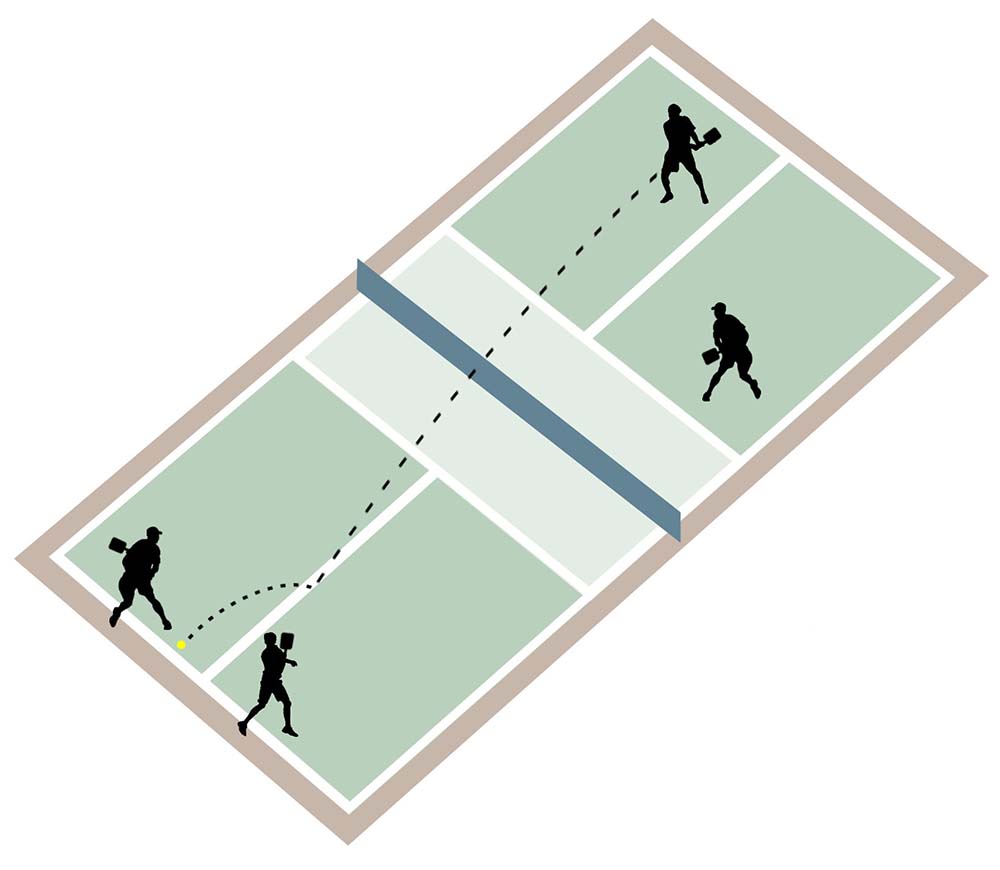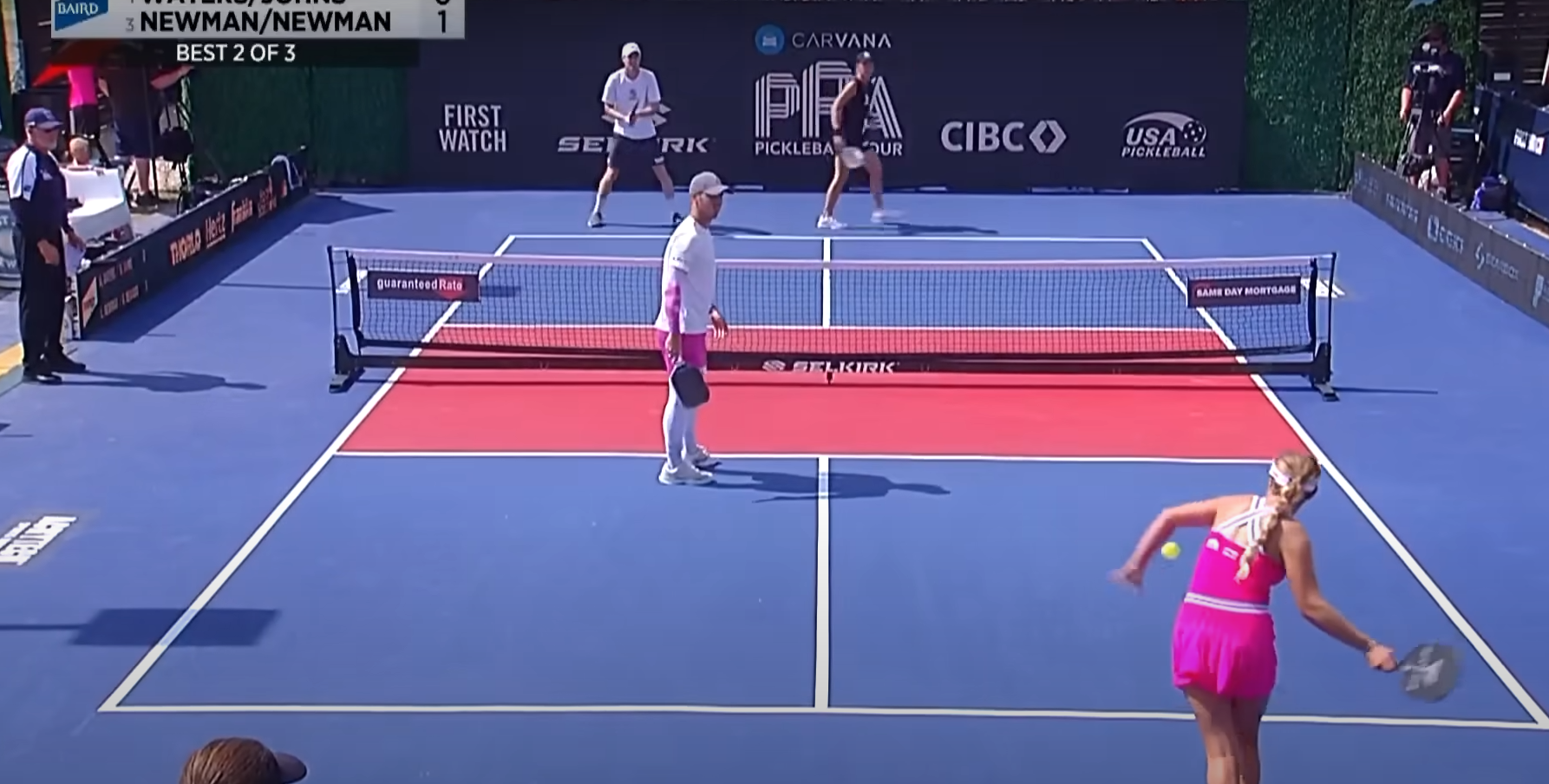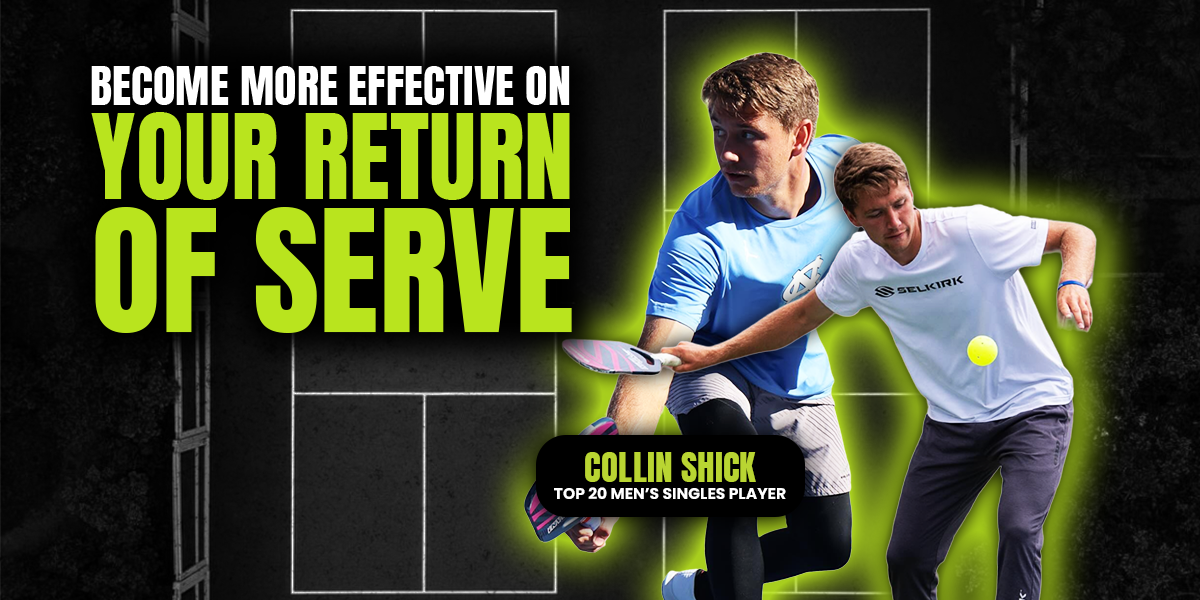Pickleball return of serve: a comprehensive guide
Pickleball return of serve is not just another shot; it is the heartbeat of a rally. Just as a painter begins a masterpiece with a bold stroke, a player initiates control of the point with a well-executed return. This moment marks your opportunity to seize the advantage, dictating both the rhythm and direction of the game. Imagine stepping up to the baseline, feeling the weight of anticipation in the air, knowing that this single action can set the tone for everything that follows. Mastering the nuances of the return of serve allows players at all levels from beginners to seasoned competitors to elevate their game, transform passive moments into assertive plays, and challenge even the most formidable opponents. With a foundation built on understanding the fundamentals, strategies, and athleticism, anyone can become a proficient returner and significantly enhance their pickleball performance.
Fundamentals of returning the serve
Positioning: Setting Yourself Up for Success
The success of a pickleball return of serve hinges on optimal positioning. Players should stand 2-3 feet behind the baseline, creating a buffer zone that allows for improved reaction time as the ball approaches. It’s essential to maintain a balanced stance feet shoulder-width apart to facilitate quick lateral movements. Just as a tree roots itself firmly to withstand the strongest storms, so too must you stabilize yourself to handle powerful serves.

In addition to balance, having your body centered in the court is vital. By positioning yourself centrally, you can efficiently shift your weight and adjust your stance to return serves aimed to either side. Staying light on your feet, with the weight distributed mainly on the balls of your feet, prepares you to spring into action. Think of it as a coiled spring ready to release energy at a moment’s notice.
Footwork: The Dance of the Court
Navigating the court with precise footwork is akin to a dancer preparing for a performance. A split step just before the server strikes the ball allows for immediate lateral movement in any direction. This agile footwork not only improves your positioning but also provides the explosive power needed to make the return. As you approach the ball, use your legs to generate momentum. Imagine driving forward with your paddle-side hip as you make contact, propelling the ball into your opponent’s court.
Good footwork also involves knowing when to pivot, turn, or take small steps to adjust your body position. Practice drills focused on footwork, like quick lateral shuffles or diagonal sprints, can mimic the actual game environment. Keeping balance throughout these movements is crucial staying low with bent knees enhances your stability and increases your chances of delivering a consistent, effective return.
Paddle Positioning: Prepare for Supremacy
Paddle positioning is another critical element that plays into the success of your return. Holding the paddle with a continental grip provides the versatility required for different types of returns whether you’re sending a flat serve back or dealing with spins. The magic happens where anticipation meets execution. Keep the paddle head up, preparing to react to the server’s ball.
Aim to make contact with the ball just in front of your body, ideally at knee level. This height allows for maximum control and power. Think of the paddle as an extension of your intent where you direct it, the ball will follow. By aligning your paddle with your body and timing your swing correctly, you can effectively redirect the ball towards your targeted area.
Return of serve strategies

Return Placement: Targeting Opportunities
Like a chess player anticipating an opponent’s moves, successful return placement can decisively disrupt your adversary’s rhythm. Strategically targeting open areas of the court can force a player into awkward positions, leading to unforced errors. Picture a well-placed shot that glides into the corners of the court, captivating your opponent’s focus on that side, leaving another opening to exploit.
Aiming for the middle of the court initially can often force opponents to adjust, creating a less favorable angle for their next shot. Alternating between cross-court and down-the-line returns keeps your opponent guessing and less able to anticipate your next move. This unpredictability becomes your greatest ally like a magician performing a sleight of hand, leading your opponent into making split-second decisions.
Reading the Serve: The Crystal Ball
Understanding the server’s nuances, including their stance, grip, and serving style, is akin to reading a book about your opponent’s strategy. Being able to read the pickleball serve allows you to anticipate its trajectory and spin, enabling you to position yourself optimally. Observing the ball’s initial motion gives you a crucial split second to determine whether it will be a flat power serve or a topspin.
In this phase, practice becomes paramount. Watching high-level players can provide insight into different serve types and their characteristics. Look for patterns or tendencies understanding your opponent’s style can inform how you approach returning their serve. Each return becomes less about guessing and more about informed decisions.
Offensive Returns: Seizing the Moment
There’s a time for finesse and a time for aggression, and a strong return can instantly give you the upper hand. Offensively driven returns often dictate the pace of the rally, enabling you to take control right from the outset. An aggressive shot not only puts pressure on your opponent but also establishes your presence on the court, often leading to shorter points.
When executing an offensive return, consider utilizing a hard drive approach striking the ball with intention and power to put your opponent on the defensive. This strategy is about more than just strength; it’s about positioning yourself for the next shot. With such techniques, players can swiftly transition from defense to offense, leveraging the return of serve as a launching pad for victory.
Common mistakes to avoid

Short Return: The Missed Opportunity
One of the frequent pitfalls players encounter is making a short return. This allows your opponent numerous opportunities to attack, significantly increasing their chances of winning the point. A return that lacks depth may be easily countered. Think of the short return as a paper boat set afloat in a storm it simply can’t withstand the impending wave of pressure from a stronger opponent’s next shot.
To combat this issue, ensuring a deep, low return is vital. Take extra care with your swing to avoid diving into an errant direction.
Long Return: The Unforced Error
Returning the ball long can be just as damaging. A ball that sails out puts your opponent in an advantageous position, handing them an easy point. This mistake may stem from swinging too hard or having a long backswing, leading to inaccuracies. Visualize your target area and focus on controlled swings this mental process can help in avoiding unforced errors.
Uncontrolled Spin: The Turbulent Bounce
Lastly, be wary of generating uncontrolled spin on your returns. While topspin can be beneficial, excessive or erratic spin may lead to unpredictable bounces, making it challenging even for you to react efficiently. To prevent this, ensure your paddle motion is consistent and controlled, avoiding over-dramatizing your swing. This is where practice comes into play rehearsing your return with a partner can foster an understanding of how different spins function.
Drills for improving your return of serve

Footwork Drill: The Foundation of Your Game
To develop your return of serve, start with a dedicated footwork drill. Practice split steps, rhythmically transitioning into lateral movements. Create sequences that challenge your agility combine shuffles with quick pivots to ensure that your feet are as agile as your decision-making.
Deep Return Drill: Landing with Intention
A deep return drill should become part of your routine. Focus on consistently landing your returns towards the baseline of your opponent’s court. You can even visualize targets on the court to enhance your accuracy.
High Return Drill: Gaining Control
Try implementing a high return drill to give yourself more reaction time. Focus on hitting high returns not only will this improve your gameplay, but it will provide you with the confidence to handle aggressive serves.
Get to the NVZ Line Drill: Advancing Position
Aiming to practice getting to the NVZ line after your return can enhance your overall game. Training on moving toward the non-volley zone after a successful return will not only sharpen your footwork but also set the stage for a more commanding presence at the net.
Lowercase “C” Drill: Mastering Spin
Lastly, introducing a lowercase “C” drill into your training can enhance your ability to generate controlled spins. Imagine swinging in a concise manner, mimicking the curves of the letter. This motion fosters both stability and precision in your return shots.
Mental aspects of returning the serve
Stay Focused: The Power of Composure
Mental resilience is just as critical as physical skill in pickleball. Staying focused while returning serves allows you to maintain composure in high-pressure situations. Trusting your training and preparations can help drown out distractions.
Visualization: Painting the Perfect Return
Visualization techniques can greatly aid in your performance. Before stepping onto the court, spend a few moments imagining yourself executing a successful return. Picture the precise angles, ball trajectories, and any potential challenges you might face. This mental rehearsal can enhance your confidence and relieve tension.
Positive Self-Talk: Fueling Your Confidence
Lastly, embracing positive self-talk instills confidence. Reminding yourself of past successes or even affirmations can shift your mindset from self-doubt to empowerment. Building a strong mental foundation is as essential as your physical training, giving you the tools needed for success.
Conclusion
Mastering the pickleball return of serve is essential for anyone looking to enhance their game. It’s not merely a part of the footwork or positioning; it’s about seizing control and momentum from the very first point. By embracing the techniques, strategies, and critical mental aspects of returning serves, you’ll swiftly transform into a more effective and commanding player. As you embark on this journey of improvement, remember that practice bolsters your proficiency. Start implementing these insights during your practice sessions, and you will quickly notice a positive impact on your gameplay. Elevate your approach to the return of serve today, and prepare to dominate the court as never before!
